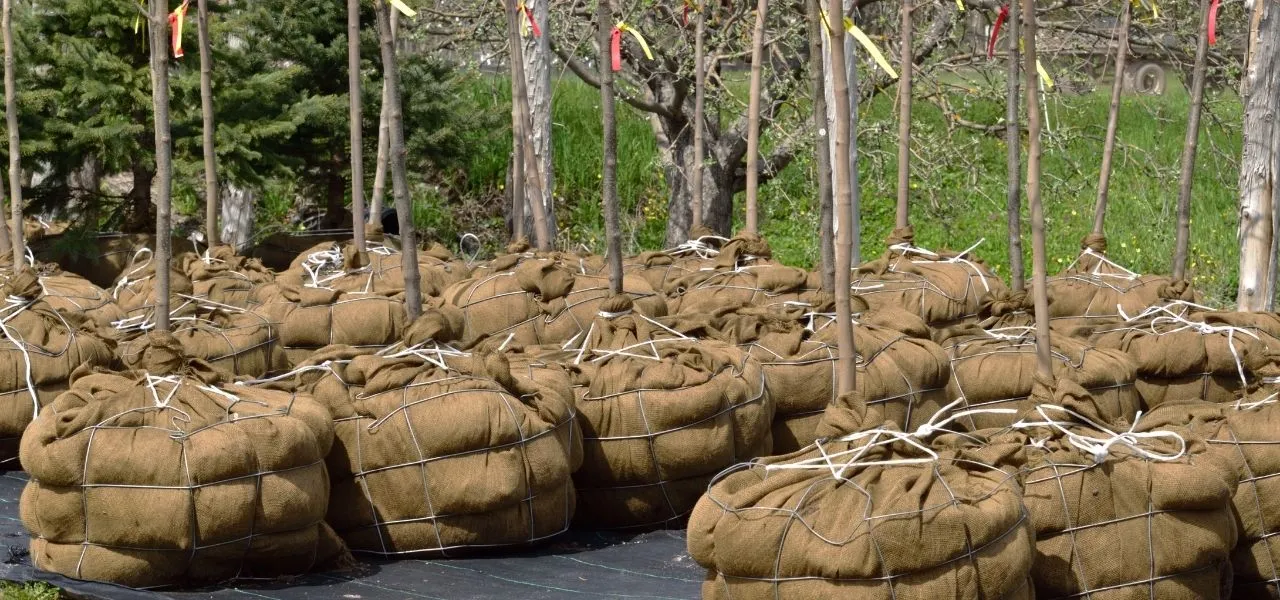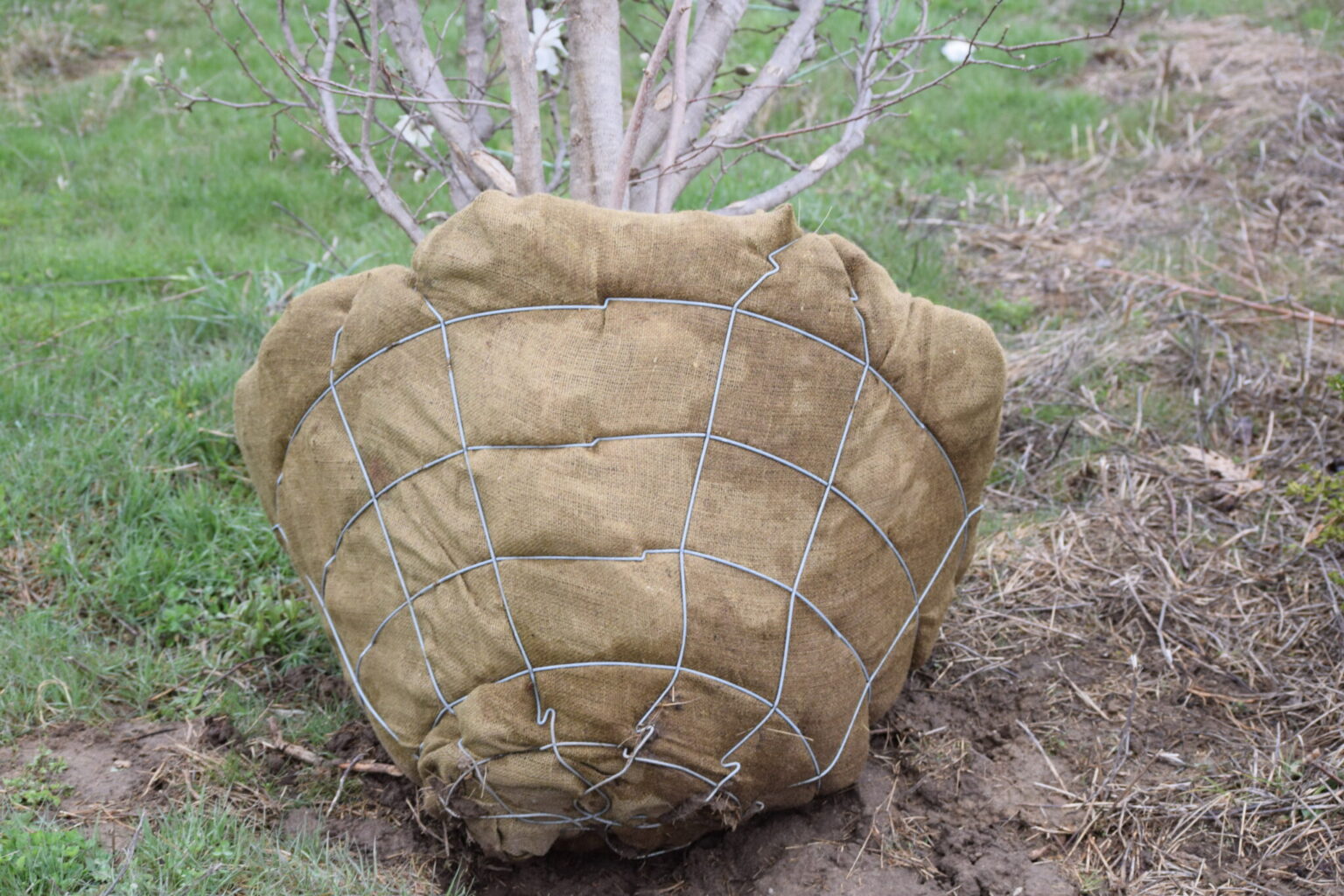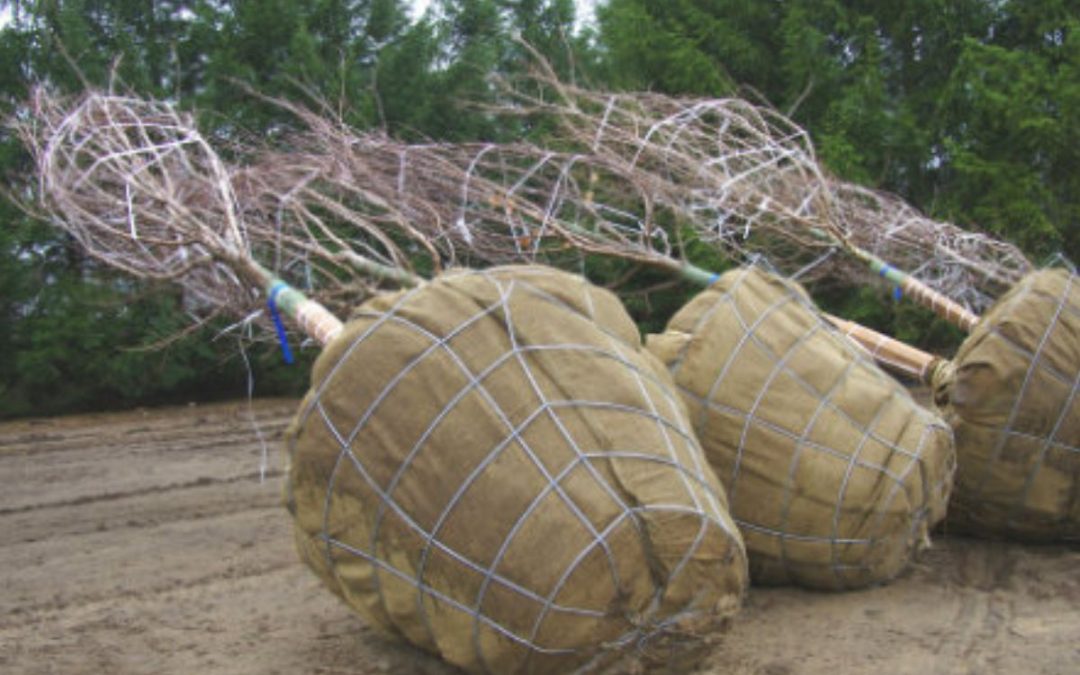The wire basket and burlap that are commonly used to wrap a tree can pose a number of problems. They may be harmful to the roots of the tree and should be removed when planting. But how do you know whether to remove them?
Table of Contents
Why Trees Are Wrapped in Burlap and a Wire Basket
If you’ve ever wondered why trees are wrapped in burlap before planting them, you’re not alone. A lot of people use the same method for their tree plantings, and there are some good reasons for it. One reason is that burlap is made of synthetic material that decomposes slowly. That means that even ten years after planting, the burlap will still be in the ground. Moreover, a wire basket has a big enough gauge for the tree’s roots to grow through.
But before planting a tree, you should make sure to check the burlap and wire basket. This kind of packaging material can be harmful to your new tree. Burlap is not a natural fiber, so it can leech plastic compounds into your soil. The wire basket will protect the root ball from damage, but it may bruise the lower trunk.
In addition to natural burlap, a wire basket contains synthetic fibers that are not likely to decompose in the soil. This type of material will eventually burn or melt, so you must be careful. A good trick to follow when planting a tree is to pull the burlap from the base of the trunk. If the burlap is wrapped around the growing trunk, it can cause girdling, which is detrimental to the tree’s health.

About The Burlap and Wire Basket Around Your Tree
When planting a tree, the burlap wrap will hold the roots together, and you can secure them with twine or a wire basket. This will make the process of planting the tree much easier. However, it is important to note that the burlap will rot over time because the roots will grow through it.
If you use wire baskets, you will have to carefully cut the wire basket around your tree. In this process, you will have to remove the top half of the wire basket before backfilling the hole. In addition, you must remove the burlap if it is made of vinyl or treated burlap. Upon planting the tree, check the roots for proper spacing. After you have made sure that the tree is planted correctly, remove the wire basket and burlap from the tree.
Some nurseries and landscape contractors will tell you not to remove the burlap from your tree. However, many landscape contractors will leave it on the tree because it makes planting faster. In addition, the burlap can act as a wick and prevent moisture from penetrating the root ball.
How Wire Baskets and Burlap Harm Tree Roots
Some people wonder if wire baskets or burlap actually harm tree roots. However, there is no conclusive proof to support that. A recent study examined the roots of fourteen-inch trees planted in 44-inch wire baskets twelve years ago. The wire itself was largely intact, and the spacing between the wires allowed for adequate root growth.
Burlap and wire baskets trap moisture around tree roots. This causes them to grow longer and thicker. This may cause the roots to circle themselves, strangling or girdling each other. This can be problematic if the plant is already deeply planted in the ground.
Burlap and wire baskets can damage the root system of a tree, so you should take special care when handling them. The burlap and wire basket may contain plastic, which remains in the soil for longer. This plastic can enter water bodies and aquifers, degrading the natural environment.

Should you remove the burlap and wire when you plant
It’s important to know when to remove the burlap and wire basket from your newly-planted tree. While they are not required to be removed during planting, they will likely degrade over time. This is because burlap is synthetic, and it will remain in the ground for up to 10 years.
Some trees come balled and burlapped, which is a bad idea because it inhibits proper root growth. Plastic burlap is particularly problematic because it will remain in the soil for a long time. In addition, the plastic particles from the burlap can reach water bodies, which can harm the environment. Besides preventing root growth, the wire basket and burlap will also protect the tree during transport and positioning in the planting hole. You can then remove them and backfill the hole.
The next step in planting a tree is deciding whether to remove the burlap and wire basket. While most sources recommend leaving the root ball intact, there are some instances when it is necessary to remove it. If the burlap is treated, it should be safe to use. If not, you may consider burying it.
Will burlap and wire wraps harm your tree?
If you’ve ever bought a tree from a nursery, you’ve probably heard that burlap and wire wraps will harm the tree. However, there are some advantages to leaving them on. The wrappings will protect your tree during transport and help it stay in the ground. In addition, they make the process of moving the tree easier.
To remove burlap and wire wraps from your tree, first remove the burlap and wire from the root ball. Be sure not to damage the soil or roots. The wire should be buried below the tree’s soil, not above it. If you cannot remove the wire, you should cut the burlap that covers it.
Trees are typically grown in ground-based nurseries, so wire and burlap wraps help prevent them from becoming damaged during transportation. If you do remove the wire and burlap, it may cause the roots to become damaged and kill the tree.

How To Remove the Burlap and Wire Basket From a Tree
Before planting a tree in your yard, be sure to remove the burlap and wire basket from the roots. Although wire baskets are typically discarded after planting, you can leave them on some trees if they are large. The burlap and wire basket should be removed from the sides and top of the rootball. Remember that your tree’s roots are its lifeline and the only way for it to take in water and nutrients from the soil. Any barriers that block the root system’s growth can stunt the growth of the tree and reduce its lifespan.
To remove the wire basket and burlap from twigs, start by cutting the wire. You can use wire cutters to cut the burlap. Be sure to remove any burlap that is made of treated or vinyl. Once the burlap is removed, make sure to keep the tree straight. After you have cut away the burlap, backfill the soil around the root ball to fill air pockets.
What Will Happen If You Don’t Remove the Burlap an
The wire basket and burlap around the base of the tree are there to support the root ball. However, if you don’t remove these materials before planting, they can interfere with the proper growth of the tree’s roots. It’s important to remove the burlap, especially if it’s treated with a plastic material. In addition, you should remove any burlap that’s covering the trunk of the tree.
A tree’s roots are its lifeline. They are responsible for bringing it water and nutrients, and burlap and wire can impede their development. Even worse, they can hinder the growth of the tree, which may compromise its safety and health. In addition, they may encroach on the roots of nearby plants.
You may not notice it but the burlap wrapped trees may not fall apart until 10 years after planting. This is because the burlap will prevent the roots from growing into the soil. Moreover, these materials are synthetic and will remain in the ground for a long time.
Conclusion
If you are planting a tree, you need to remove the burlap and wire from the top of the root ball of the tree. The wire can damage the roots from the inside out. If the wires are left in place, the tree may never grow to its full potential. Burlap and wire are not nearly as harmful as burlap, but it is advisable to remove them from the top. Burlap and wire should be cut into pieces that are 12 to 18 inches long.
This practice is not recommended by most landscape contractors or growers. In fact, some may argue that it can cause the tree to die. While it is true that proper staking is necessary to support the tree, removing the wire basket and burlap can prevent it from becoming stressed.
Another reason to remove the wire basket and burlap is to avoid future girdling and to help prevent bending the wires. However, if you are planting a tree in the field, it is better to leave the rope in place for better stability.

